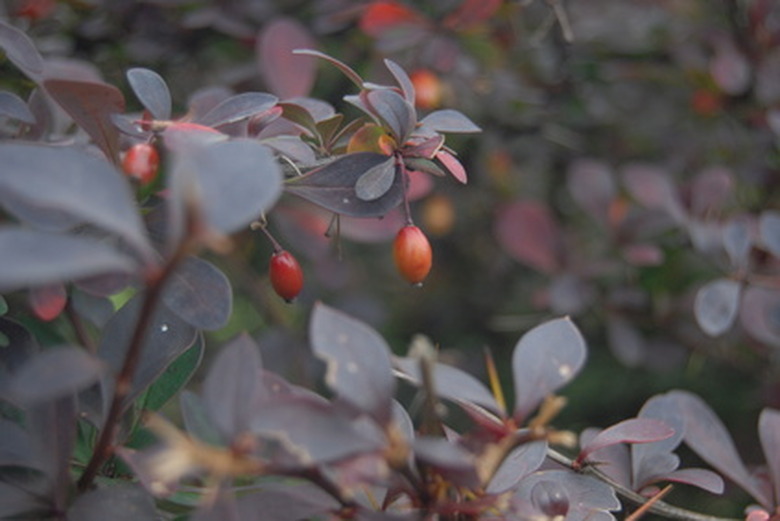How To Prune Berberis Darwinii
Things Needed
- Long handled loppers
- Pruning shears
- Heavy duty elbow-length garden gloves
Berberis Darwinni is a broadleaf evergreen shrub more commonly known as Darwin Barberry. It grows with a upward and outward fountain-like habit and spreads vegetatively underground to form large thorny thickets. According to Oregon State University, Darwin Barberry is hardy down to USDA zone 7 and is native to the regions of Chile and Argentina in South America. As a spring flowering shrub, Purdue University recommends that barberry it be pruned in the late spring or early summer immediately after flowering has finished for the season. This will allow new growth to harden off before winter and preserve the buds for the following spring's bloom.
Step 1
Thin the oldest and most defoliated branches from the shrub each year or every few years to encourage fresh, leafy growth to keep the shrub full. Prune back up to 1/3 of the oldest branches down to the crown of the plant, pull them gently from the shrub and discard them. Remove up to 1/3 of the shrub each year, but no more to reduce the stress on the plant.
- Berberis Darwinni is a broadleaf evergreen shrub more commonly known as Darwin Barberry.
- As a spring flowering shrub, Purdue University recommends that barberry it be pruned in the late spring or early summer immediately after flowering has finished for the season.
Step 2
Reduce the height and spread of the shrub by heading back the ends of the longest branches removing the new or old growth. Remove roughly 1/4 or 1/3 of the branch length and always place the cut on the bias 1/4-inch above a leaf node, pair of leaves or a lateral branch so that new branching growth remains possible.
Step 3
Control the rate of growth of your barberry by pinching back or trimming off just the growth that appears on the tips of the branches. Use pruning shears or your fingertips to remove just the last inch to three inches of the branch. Place the pinch or cut just above a pair of leaves or a leaf node to preserve branching ability and fullness.
Tip
Don long, heavy duty, elbow length garden gloves or wear a heavyweight canvas jacket when working around or in barberry. The spines along the branches are sharp and can easily pierce or cut skin that is not well protected.
